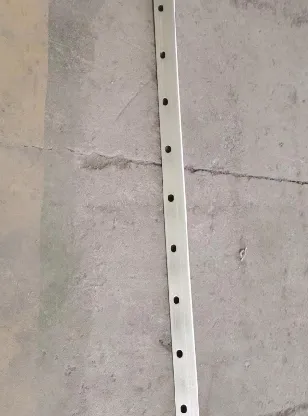loading...
- No. 9, Xingyuan South Street, Dongwaihuan Road, Zaoqiang County, Hengshui, Hebei, China
- admin@zjcomposites.com
- +86 15097380338
- Welcome to visit our website!
frp louvers for cooling tower
FRP Louvers for Cooling Towers An Overview
Cooling towers are vital components in various industries, facilitating efficient heat exchange and ensuring the optimal functioning of processes that involve temperature regulation. Among the many components that contribute to the effectiveness of cooling towers, louvers, particularly those made from Fiber-Reinforced Plastic (FRP), play a crucial role. This article will explore the significance of FRP louvers in cooling towers, their benefits, and their applications.
What are FRP Louvers?
FRP louvers are components designed to control airflow and prevent water ingress in cooling towers. Made from composite materials, FRP combines the mechanical strength of fiberglass with the corrosion resistance of plastic. This unique combination makes FRP an excellent choice for environments often subjected to moisture, chemicals, and varying temperatures.
Benefits of Using FRP Louvers
1. Corrosion Resistance One of the most significant advantages of FRP is its resistance to corrosion. Cooling towers operate in humid and sometimes chemically aggressive environments, making materials susceptible to rust and degradation. FRP louvers can withstand these conditions without deteriorating, thereby extending the lifespan of the cooling system.
2. Lightweight and Easy to Install FRP louvers are considerably lighter than traditional materials like metal or concrete. This lightweight nature not only simplifies transportation but also reduces the structural load on the cooling tower. Furthermore, their easy installation translates to lower labor costs and expedited setup times.
3. Durability FRP is known for its durability and can withstand extreme weather conditions, including high temperatures, heavy winds, and prolonged exposure to ultraviolet rays. This durability ensures that FRP louvers maintain their performance and appearance over time, lessening the need for frequent replacements.
frp louvers for cooling tower

4. Energy Efficiency Properly designed FRP louvers enhance the operational efficiency of cooling towers. By optimizing airflow and minimizing water loss through evaporation, these louvers contribute to reduced energy consumption, making cooling systems more environmentally friendly and cost-effective.
5. Customization Options FRP louvers can be tailored to meet specific performance requirements. Whether a cooling tower needs louvers with a particular angle, size, or airflow capacity, customization allows for the design to suit particular operational conditions, leading to improved efficiency.
Applications of FRP Louvers
The applications of FRP louvers extend beyond cooling towers. They are also utilized in several industries, including power generation, chemical processing, manufacturing, and HVAC systems. In power plants, for instance, FRP louvers are critical for maintaining the efficiency of cooling systems, ensuring that equipment remains within optimal temperature ranges.
Additionally, FRP louvers can be found in commercial buildings, where they contribute to ventilation systems, helping regulate indoor temperatures and air quality effectively.
Conclusion
Incorporating FRP louvers into cooling tower designs offers numerous advantages, including corrosion resistance, durability, and enhanced efficiency. As industries continue to seek solutions that combine performance with sustainability, FRP louvers represent a robust and adaptable choice. Their ability to withstand harsh environments while providing operational benefits makes them invaluable components in modern cooling systems. As the demand for energy-efficient and long-lasting solutions grows, FRP louvers stand poised to play an essential role in the evolution of cooling technology.
-
Transform Your Spaces with FRP Grating SolutionsNewsNov.04,2024
-
The Versatility and Strength of FRP RodsNewsNov.04,2024
-
The Excellence of Fiberglass Water TanksNewsNov.04,2024
-
The Benefits of FRP Grating for Your ProjectsNewsNov.04,2024
-
Elevate Your Efficiency with FRP Pressure VesselsNewsNov.04,2024
-
Welcome to the World of FRP Pressure VesselsNewsOct.12,2024
-
Unveiling the Future of Filtration: Why FRP Filter Vessels are a Game ChangerNewsOct.12,2024
